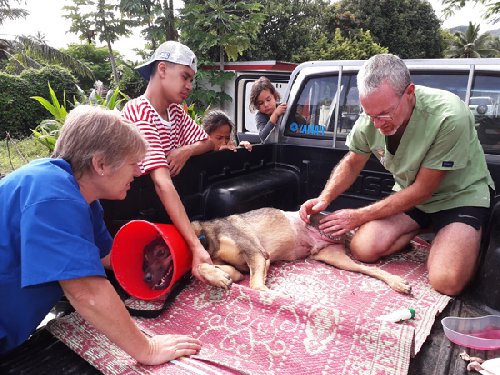 Superannuation is money put aside and saved while you’re working, to provide an income later in life when you retire.
Superannuation is money put aside and saved while you’re working, to provide an income later in life when you retire.
From 1 July 2023, the super guarantee rate rose from 10.5% to 11%. Employees who think superannuation hasn’t been paid can make a complaint to the ATO.
The Superannuation Guarantee
In Australia, Employers must pay Super (the Super Guarantee) for
- employees 18 years
- employees under 18 years working more than 30 hours a week.
- some contractors paid primarily for labour, even if they have an ABN
The Super Guarantee is currently 11.0% of ordinary time earnings – this includes some bonuses, allowances, some paid leave, but not generally not overtime. It will increase by 0.5% each year up to 12% . Employers are obliged to contribute this minimum percentage, but can contribute more. Full time, part time, and casual employees are all included.
Removal of the $450 threshold has now come into force, so Super must be paid for employees as above irrespective of their weekly wage.
SuperStream
Contributions must be made on at least a quarterly basis, by the quarterly due dates. Employers must pay and report super electronically in a standard format and meet SuperStream requirements, and pay into a complying super fund.
If not paid on time, the super guarantee charge may be payable. An employee’s super contribution is counted as being paid on the date the fund receives it, not the date a clearing house receives it. This means that if a quarterly payment is due on 28th October for example, payment may need to be made up to 10 days prior.
Contractors
Many Vets work as contractors, have an ABN (Australian Business Number) and invoice clinics for their work. However, for Superannuation purposes, they may still be considered an employee and entitled to the Super Guarantee from their employer if they are paid wholly or principally for their labour and skills, perform the work personally, and are paid for hours worked, rather than to achieve a result. To work out whether super applies, see Employee or contractor | Australian Taxation Office (ato.gov.au)
Temporary Residents
Temporary Residents ARE entitled to the Super Guarantee. This includes Working Holiday Makers.
When Temporary Residents leave Australia, they may be entitled to claim the super paid for them back, as a DASP – Departing Australia superannuation payment. For more information visit Departing Australia superannuation payment DASP | Australian Taxation Office (ato.gov.au)
Additional Contributions
You can add your own money into your super savings, and low or middle income earners may be eligible for government co-contributions.
Employees can initiate a salary sacrifice arrangement with their employer (pre-tax), or make their own personal contributions. There is a cap on Concessional contributions (which includes Super Guarantee payments from your employer), currently $27,500.
Tax on Super
Concessional Contributions – 15%
These are super contributions made before tax, and include super guarantee from an employer, salary sacrifice, personal contributions claimed as an income tax deduction. The cap on concessional contributions has been $27,500 since 1st July 2021 – more than this attracts extra tax
Non-Concessional Contributions – not subject to tax
These are super contributions made after-tax eg. spouse contributions or personal contributions not claimed as an income tax deduction. There is a cap on these too.
Keeping Track of Super using MyGov
Employees can nominate which Super fund they wish to have their contributions paid into and provide that information to the employer. They can now do this online in myGov, or find a standard form here Superannuation standard choice form | Australian Taxation Office (ato.gov.au) . A myGov account https://my.gov.au is a central portal to which you can link Medicare, Centrelink, Child Support, ATO (Australian Taxation Office), My Health Record & other government agencies. You need a fair amount of information in order to link these agencies all in to your account, so make sure you have all your paperwork handy. Once done, you can see what Superannuation Fund accounts you have and keep track of them through the ATO link in MyGov.
Stapled Super Funds
A stapled super fund is an existing super account linked, or ‘stapled’, to an individual employee so that it follows them as they change jobs. Employers should offer employees a choice of super fund, however, for employees who don’t choose a super fund (this may include contractors), or who may not be eligible to choose a super fund (for example, temporary residents), the employer should request the stapled super fund details for an employee from the ATO using ATO Online services. This has been a requirement since 1st November 2021. For more information visit the ATO website.
More Information
For more information about all aspects of super for employers and employees, including how to find lost super, visit https://www.ato.gov.au/Super/
Author:
Wendy Nathan
Kookaburra Veterinary Employment
This information includes the views and opinions of Kookaburra Veterinary Employment and is of a general nature only. Factual information is believed to be correct at the time of writing, however, should not be relied upon and any person should confirm details with the relevant authorities and through their own research prior to acting on any of the suggestions in this article.
 There’s good news for Australian vets and vet nurses seeking to work in the UK, and vice-versa, with the Australia-United Kingdom Free Trade Agreement (A-UKFTA).
There’s good news for Australian vets and vet nurses seeking to work in the UK, and vice-versa, with the Australia-United Kingdom Free Trade Agreement (A-UKFTA). 

 In a reaction to the enforced quarantine of the pandemic in not just our own countries, but also often our towns and cities, travelling is now firmly back on the “to do” list of more people than ever.
In a reaction to the enforced quarantine of the pandemic in not just our own countries, but also often our towns and cities, travelling is now firmly back on the “to do” list of more people than ever.




 Superannuation is money put aside and saved while you’re working, to provide an income later in life when you retire.
Superannuation is money put aside and saved while you’re working, to provide an income later in life when you retire.